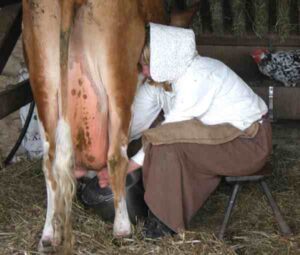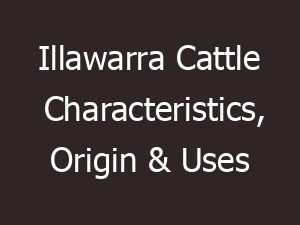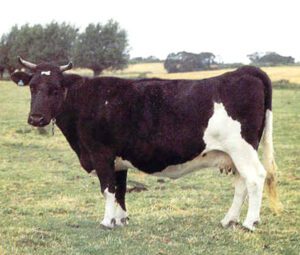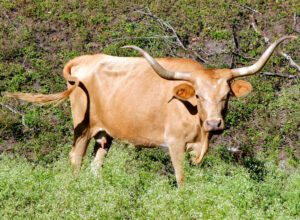The Asturian Valley cattle are a dual purpose breed of cattle which are raised for both milk and meat production. The breed originated from the valleys of Asturias, Spain and belongs to an exclusive bovine group in Spain known as the tronco Cantábrico (‘Cantabric trunk’).
The group tronco Cantábrico includes only the breeds native to the northern Spain. The breed is also known by some other names such as Asturiana Occidental, Asturiana de los Valles and Carreñana.The Asturian Valley cattle maintain the largest number of this group.
Currently the breed is mostly raised in the northern coastal areas on the Bay of Biscay and the river valleys at the foot of the Cordillera Cantábrica mountain range.
It was used for milk and meat production traditionally and also used for draught work purposes. But their importance as dairy cattle breed has reduced since other highly productive dairy cattle breeds have been introduced to Spain.
They were the most abundant breed in the northern part of the country during the 19th century. But a massive invasion of the highly productive foreign breeds dangerously lowered their total numbers at the beginning of the 20th century to about 22,000 animals only.
Now the breed is spread to some other parts of Spain, although once again they are most prominent in the northern areas. Read characteristics, uses and special notes about the breed below.
Asturian Valley Cattle Characteristics
Asturian Valley cattle are medium sized animals. Their body coloration varies from dark brown to light golden brown. And sometimes with a white head, apart from the eyes.
Sometimes their underside of the abdomen can also be of white color. Both bulls and cows usually have horns. Their horns are of medium sized and usually straight.
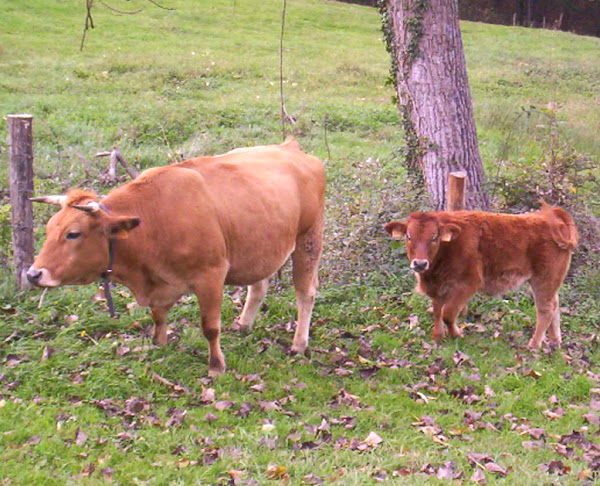
Average live body weight of the mature Asturian Valley cows is around 600 kg. And the mature bulls on average weight around 700 kg. Photo and info from Wikipedia.
Uses
Asturian Valley cattle are mainly a dual purpose animal. They are good for both milk and meat production.
Special Notes
The Asturian Valley cattle are well adapted to their native climates. Although they are mainly a dual purpose animal, but they were also raised for draught work purposes in the past.
They are very good for milk production. And they are most appreciated for their very high quality milk production. Their milk is highly rich in fat content and protein.
The breed is also very good for meat production, and their meat is also of very high quality. The cows are very good mothers and they calve relatively easily. They are very fertile and give birth to large and well-shaped calves.
They are usually of very good behavior and are very calm in temperament. They are very easy to handle and also can do very well in extreme temperatures.
However, review full breed profile of the Asturian Valley cattle in the following chart.
| Breed Name | Asturian Valley | |
| Other Name | Asturiana Occidental, Asturiana de los Valles and Carreñana | |
| Breed Purpose | Milk and meat | |
| Special Notes | Well adapted to native climates, very good for meat production, hardy, good for milk, good quality meat, very fertile, good quality milk, easy calving, easy to handle, good for draught works | |
| Breed Size | Medium | |
| Bulls | Around 700 kg | |
| Cows | Around 600 kg | |
| Climate Tolerance | Native climates | |
| Coat Color | Varies from dark brown to light golden brown, and sometimes with a white head and underside of the abdomen | |
| Horned | Yes | |
| Milk Yield | Good | |
| Rarity | Common | |
| Country/Place of Origin | Spain |
